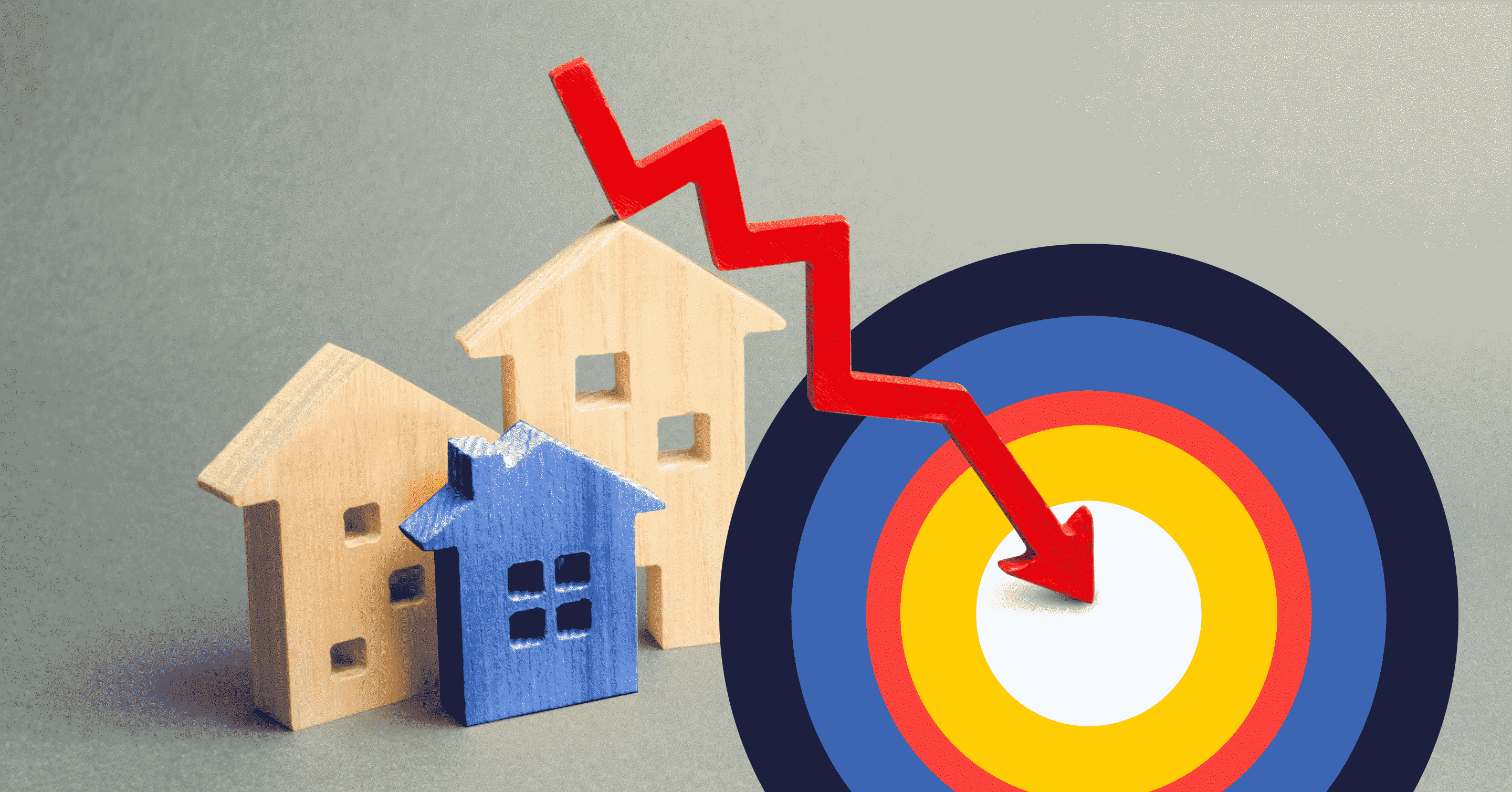What Interest Rate Cuts Will Do To Mortgage Holders In Canada

Interest rate cuts by the Bank of Canada can bring much-needed relief to mortgage holders, but not all borrowers benefit equally. Whether you’re on a variable mortgage, locked into a fixed rate, or preparing for renewal, rate cuts can change your financial outlook significantly.
Understanding the ripple effects of a BoC rate cut is essential in today’s volatile market. From shrinking monthly payments to unexpected amortization shifts, we’ll explain what current and future rate cuts mean for Canadian homeowners and how to plan your next mortgage move with confidence.
Key Highlights
- Variable mortgage holders benefit first from rate cuts, often through lower payments or faster principal repayment.
- Fixed-rate borrowers don’t benefit until the loan is renewed or refinanced; understanding the timing is essential.
- Lower rates boost affordability for buyers but may also increase home prices and household debt.
What Happens When the Bank of Canada Cuts Rates
The Bank of Canada (BoC) adjusts its overnight policy rate to influence inflation and economic growth. When the BoC cuts its benchmark rate, it lowers borrowing costs for financial institutions, which in turn can lower their prime lending rates.
Since variable mortgage rates are directly linked to a lender’s prime rate, these often react quickly to policy changes. Fixed mortgage rates, however, respond more slowly and are influenced by bond yields and inflation expectations.
Impact on Variable-Rate Mortgage Holders
Variable-rate mortgage holders are typically the first to feel the effects of a Bank of Canada rate cut. Unlike fixed-rate borrowers, variable interest rates move with their lender’s prime rate, directly influenced by the BoC’s overnight rate. That means a drop in the policy rate can quickly affect their monthly payments, or how their payments are allocated, depending on the type of variable mortgage they hold.
Adjustable vs. Fixed-Payment Variable Mortgages
When rates drop, borrowers with adjustable-rate mortgages (ARM) see their monthly payments decrease almost immediately. This fluctuation in borrowing costs can offer significant cash flow relief. For example, a 25-basis-point rate (0.25%) cut on a $400,000 mortgage could reduce monthly payments by around $60.
Borrowers with variable-rate mortgages (VRMs), those with fixed payments, won’t see their monthly payment change; however, a greater portion of the payment will go toward reducing the principal rather than covering interest. This change between the principal and interest components of the VRM fixed monthly payment effectively shortens the amortization period, helping to pay off the mortgage faster.
Trigger Rate Considerations
For borrowers who hit their trigger rate during the BoC’s hiking cycle, the rate at which their fixed payments no longer cover the interest component and principal is no longer being paid down. Rate cuts can move borrowers below their trigger rate, restoring principal repayment and helping reduce amortization. For VRMs, rate cuts are critical for avoiding prolonged negative amortization or forced payment adjustments.
Impact on Fixed-Rate Mortgage Holders
Fixed-rate mortgage holders may not immediately feel the effects of Bank of Canada rate cuts. That said, they are not entirely unaffected. Unlike variable-rate borrowers, those with fixed terms are protected from short-term rate changes until their mortgage term ends or they choose to refinance. Falling interest rates can still present opportunities at renewal or even earlier for borrowers aiming to lower their borrowing costs.
Bond Yields and Market Expectations
Fixed mortgage rates are not tied directly to the BoC policy rate but are influenced by Government of Canada bond yields. Rate cuts can lead to lower yields if the market expects a sustained easing of the monetary cycle, which could eventually lower fixed mortgage rates for new borrowers. According to CMHC, fixed rates often lag the policy rate fluctuations by weeks or even months.
Renewals and Refinancing Opportunities
Fixed-rate borrowers won’t see any immediate benefit unless they refinance. However, if you’re nearing renewal, rate cuts could mean locking in a better deal. Some may consider breaking their mortgage early, but prepayment penalties must be weighed against the potential savings. It’s advisable to use a mortgage penalty calculator or consult with a mortgage broker to determine whether refinancing makes sense.
The Effects of Rate Cuts on First-Time Buyers’ Purchasing Power
Lower interest rates can increase mortgage affordability, allowing buyers to qualify for larger mortgage loans. For example, a 100-basis-point (1%) drop in rates could raise a buyer’s purchasing power by tens of thousands of dollars. However, this often increases price pressure and demand on the housing market, particularly in tight urban markets like Toronto or Vancouver.
Buyers should be cautious not to overextend themselves, even if mortgage qualification thresholds are temporarily eased. A balanced strategy that includes budgeting for potential rate volatility remains key.
Economic Risks of Rate Cuts
In the current environment, the BoC must balance inflation control with economic support, which is why cuts are typically incremental and closely scrutinized. According to the Bank of Canada, rate cuts are made with caution to avoid repeating past policy errors that reignited inflation. While rate cuts aim to stimulate borrowing and spending, they carry potential side effects:
- Higher home prices due to increased demand
- Rising household debt levels
- A resurgence of inflation if demand outpaces supply
Timing Your Mortgage Strategy Around Rate Cuts
When interest rates begin to fall, timing becomes a crucial component of your mortgage strategy. Whether you’re deciding to lock in a rate, switch from variable to fixed, or refinance your existing loan, rate cuts can influence your next move. The right approach depends on your current mortgage terms, financial goals, and the length of time you plan to stay in your home.
Locking In vs. Staying Variable
Choosing between a fixed or variable mortgage after a rate cut depends on your financial goals and risk tolerance. Variable rates can offer savings if more cuts are expected, while fixed rates offer certainty. Many borrowers opt for a hybrid strategy, such as a shorter fixed term or a convertible or hybrid mortgage, to hedge their interest rate risk.
Should You Refinance After a Rate Cut?
Refinancing to capture lower rates can be worthwhile, but only if the savings outweigh penalties. If you’re on a variable or open mortgage, the switch may be easier and less costly. Those with closed and fixed terms should calculate the interest rate differential (IRD) before moving forward. Use a trusted mortgage penalty calculator to run the numbers, or contact your bank or mortgage lender to confirm the details.
Who Benefits Most From Rate Cuts?
Understanding how rate cuts play out across borrower profiles can help you plan your mortgage strategy accordingly:
- Variable-rate borrowers: Immediate principal gains
- Adjustable-rate borrowers: Immediate payment reductions
- Fixed-rate borrowers: Benefit at renewal or through refinancing
- First-time buyers: Increased borrowing power, but face rising prices
- Renewers: Opportunity to lower costs if timing aligns with market trends
Frequently Asked Questions (FAQ) About How Interest Rate Cuts Affect Mortgage Holders
When will interest rates in Canada decrease again?
The Bank of Canada evaluates inflation and economic trends before adjusting rates. Cuts are more likely if inflation stays near the target and economic growth slows.
Do mortgage rates drop immediately after a BoC rate cut?
Variable rates typically drop quickly. Fixed rates may follow if bond yields decrease based on future expectations.
How do rate cuts affect fixed vs. variable mortgage holders differently?
Variable-rate holders feel the effects right away. Fixed-rate holders benefit at renewal or if they refinance.
Should I refinance my mortgage when rates are cut?
Refinancing after a rate cut can lead to long-term savings, especially if your mortgage rate is much higher than what’s now available. However, you’ll need to weigh the potential savings against any prepayment penalties or fees for breaking your mortgage early. A nesto mortgage expert can help you run the numbers to see if refinancing is worth it based on your remaining term, penalty costs, and financial goals.
What’s the trigger rate, and how does it relate to interest rate changes?
It’s the point at which fixed-payment variable mortgages (VRM) stop reducing principal. Rate cuts can help borrowers drop or stay below that threshold.
Final Thoughts
Interest rate cuts offer an opportunity for many Canadians to reduce their borrowing costs, but the effects vary depending on the type of mortgage and the timing. For variable-rate borrowers, this often means instant savings. Fixed-rate borrowers can take advantage of improved terms at renewal or through refinancing.
Navigating your mortgage options can be challenging. If you’re unsure whether to stay put, lock in, or refinance, connect with a nesto mortgage expert. We’ll help you compare your best mortgage rates and options, calculate the trade-offs, and build a personal mortgage strategy that supports your long-term financial plan, whether you’re buying, renewing, or refinancing.
Why Choose nesto
At nesto, our commission-free mortgage experts, certified in multiple provinces, provide exceptional advice and service that exceeds industry standards. Our mortgage experts are salaried employees who provide impartial guidance on mortgage options tailored to your needs and are evaluated based on client satisfaction and the quality of their advice. nesto aims to transform the mortgage industry by providing honest advice and competitive rates through a 100% digital, transparent, and seamless process.
nesto is on a mission to offer a positive, empowering and transparent property financing experience – simplified from start to finish.
Contact our licensed and knowledgeable mortgage experts to find your best mortgage rate in Canada.
Ready to get started?
In just a few clicks, you can see our current rates. Then apply for your mortgage online in minutes!



